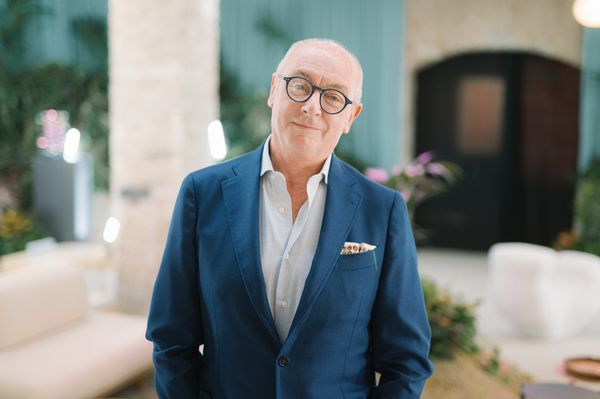They started with a small downtown lamp shop and today they are associated with the world’s most important design brands. Zoltán Orbán, one of the founders and owners of Solinfo, told us how they built the Solinfo Group from a two-person business into a genuine design empire.
How did the Solinfo story start?
Krisztián and I have known each other for a long time (Krisztián Szetei, the other owner of Solinfo—the Ed.), and the idea of a joint venture was born more than eighteen years ago. We assessed how much money we had for it, and we jumped in. Things were very different back then, no big showrooms had been opened anywhere in Budapest, and most of the shops of that time have already vanished. We started in a very small shop in Kertész Street, downtown Budapest. Our second location was 250 square meters, which we stumbled upon by chance. We bought our furniture from IKEA, because that was all we could afford, and we didn’t even know what was on offer at the time. It was so empty we could have played football in it! And we rented it from an Austrian businessman, paid in euros, and then the recession hit—so I can definitely say that we are children of the crisis.
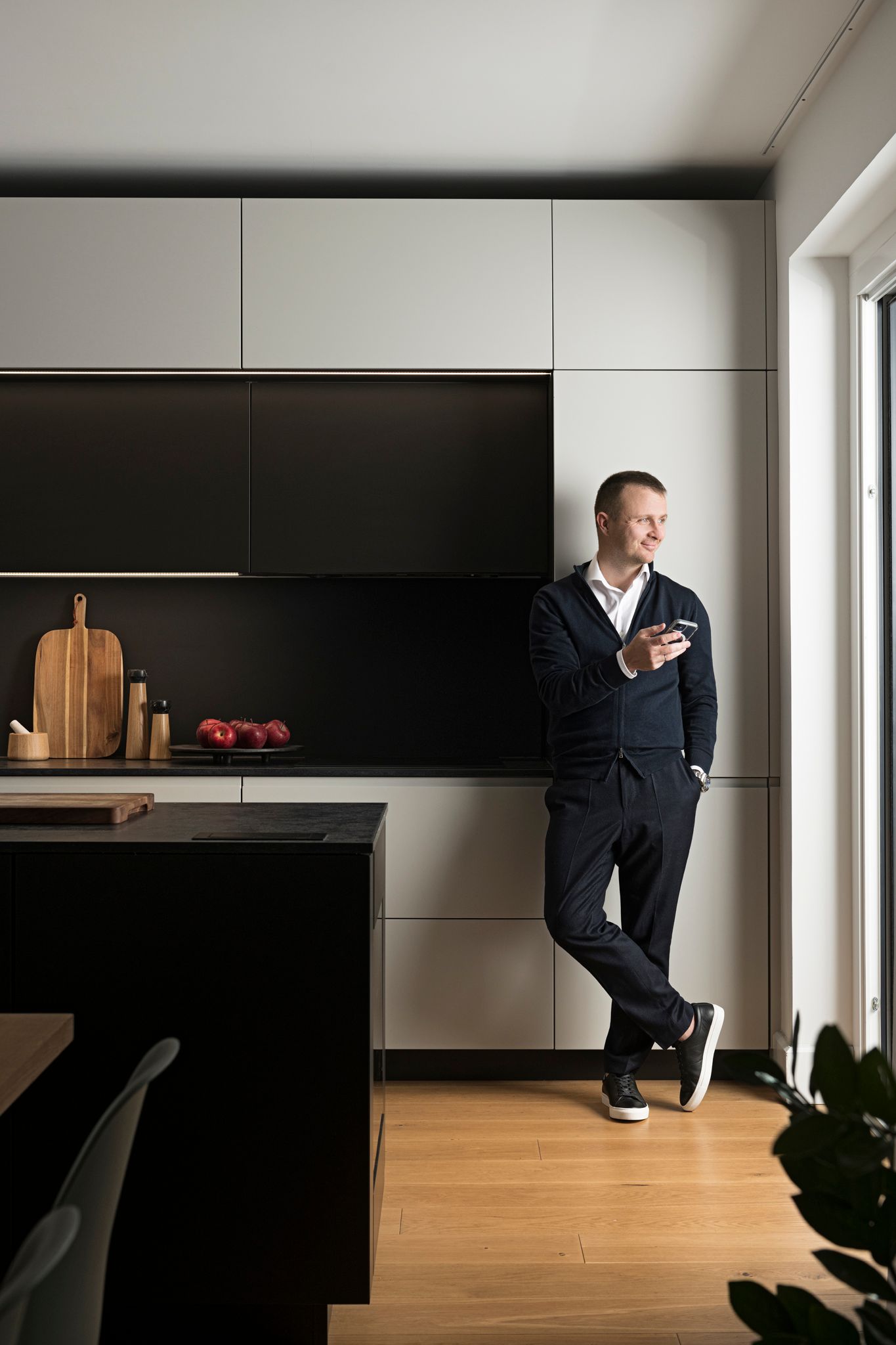
How have you managed to stay on this fast growth path despite all this?
We had no connection at all, but we were very enthusiastic. We had a website, which at the time was rare, and it attracted a lot of people. We were always nice and helpful in the shop, putting the customer first, and really trying to please. In the beginning, the focus was more on retail sales, there were fewer business projects. I can still remember the name of the first customer who contracted a million! In the beginning, we hardly took any payments, we always preferred to reinvest them and buy more lamps. We grew slowly: two of us at the beginning, and when we left Kertész Street in 2012, there were fourteen employees. Slowly we got to know the business better and started attending exhibitions. In Milan we collected business cards like there was no tomorrow, we introduced ourselves to everyone, including the biggest manufacturers. Krisztián has the good quality of being very easy and good at building relationships. Also, I consider it great luck that I met Dóra Fónagy relatively early on, at the time she was the best-known and most respected interior designer in Hungary.
How do you manage to combine a wide selection with the right expertise? Do you hire highly skilled staff or do you train colleagues in-house?
I’ve always had in my mind that this can only be done well if there are not two of us involved, but everyone identifies with our goals, as it’s important to move forward together. This may seem obvious today, but during the crisis, when companies were going bankrupt around us on a daily basis, it was a different story. Every year we went to Milan, to Frankfurt, to different factory visits, so we spent and still spend a lot of our income on this, proportionately. Today we have over a hundred employees, most of whom have been with us for years. For me, it’s also very important to have chemistry and a sense of humility, to feel that somebody fits in our team, and wants to learn and get better every day. If all this is combined with the right knowledge, it’s like changing the processor in your computer, a huge leap! We’ve had several cases where a colleague wanted to try something different, left, and after a while came back because they were used to the fast pace and the complexity of working on a wide range of things in a very creative way. We select all our employees very carefully, even the electricians have to keep in mind that they are the end contact between the company and the client. I always say that one bad feedback spoils a hundred good ones.
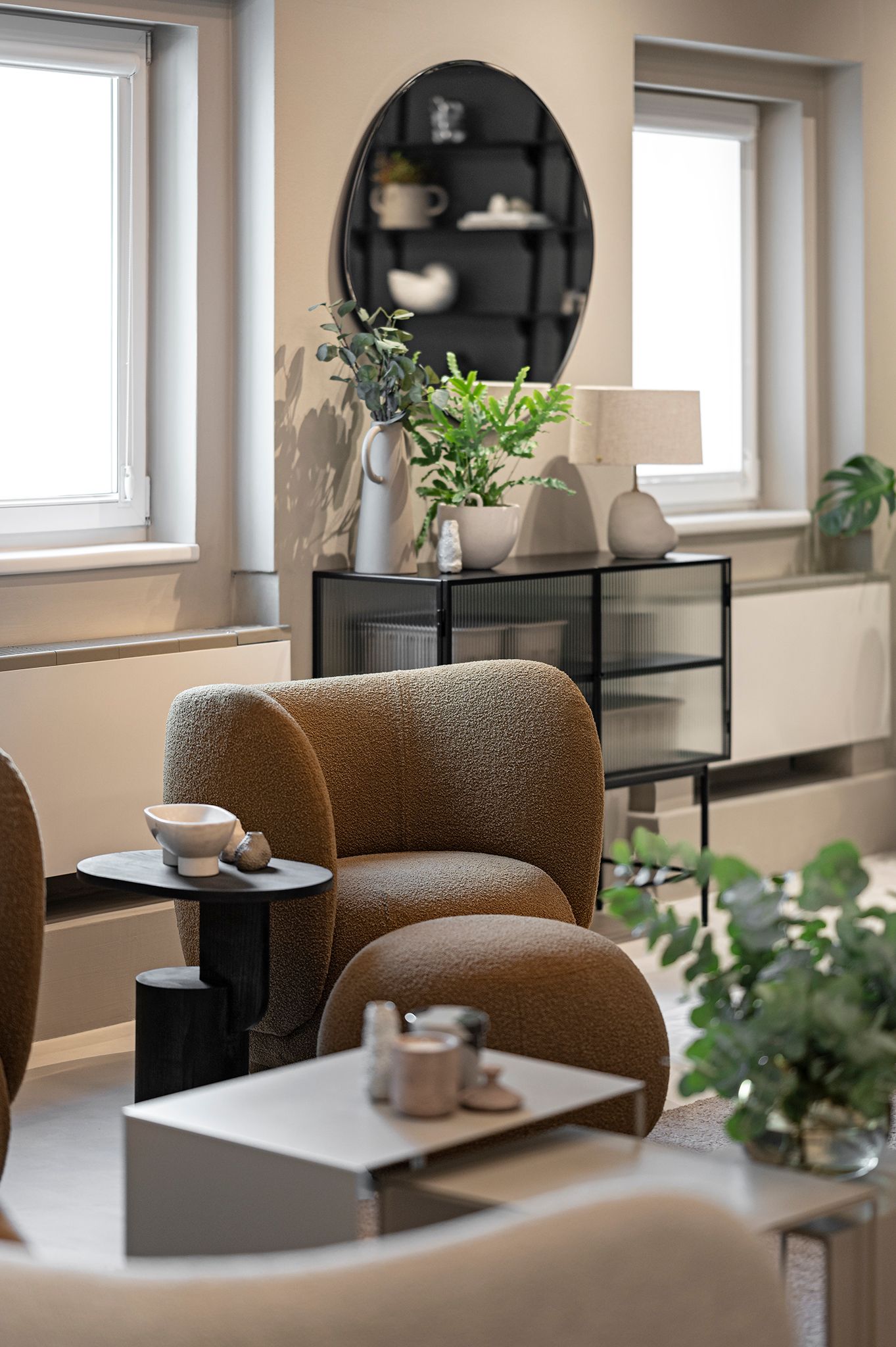
Was it planned from the beginning that you would open up to other aspects of interior design?
When we left the Kertész Street shop, we were still focusing mainly on lamps, but it was becoming more and more apparent that the full service we offer for lamps was still completely lacking in furniture in this country. Of course, it’s quite different to deal with furniture, it’s much more expensive to furnish the showroom itself. We have tried to become an inescapable player by signing exclusive agreements with a number of manufacturers. Over time, these have developed into long-term relationships: in many places, the salesman with whom we had an agreement ten or fifteen years ago is now in a leading position, and the good relationship, and with it the good business connection has been maintained. Professionalism, predictability, and fairness are always appreciated. We now import products from 757 manufacturers a year, from everywhere from Australia to North America. Our first brand was Delta Salotti, a company from southern Italy, and we had a leather seating set on display in the showroom. It wasn’t a huge success! It was much harder to make a profit in furniture at the beginning. But alongside our complex lighting design ‘pillar’, Solinfo Lightning Embassy, we finally set up Design Embassy in 2016 and things took off from there. This year we also received the Design Management Award from the Hungarian Design Council.
What was the first really big brand you managed to sign a contract with?
Our first really important brand was Tom Dixon, and it still is. We have a close relationship with Tom, the designer. We saw his distinctive brass-shade lamp in a restaurant and decided we wanted it. It was quite new on the market at the time because, for example, it wasn’t common for someone to build their brand on their own name. We approached him relatively early in his career, and, of course, we didn’t get any response. Then, through a convoluted process, we finally got his phone number, Krisztián called him, and they were so surprised that we managed to arrange a meeting with them in London a few days later. There we shook hands and we were the Hungarian partner of the brand. That’s how Tom Dixon became our flagship brand in 2009, and he even attended our opening. They had just designed their first hotel in Prague, so Tom “jumped over” from there. The event was so big that we could barely fit people in, it was amazing! And Tom is downright professional, he’s extremely chill, but he can go into “business mode” at any moment. We later brought in other big, established tech brands where it was not enough to be a good dealer, but you also needed to have the right expertise and good designers, like VIBIA, FLOS, or XAL.

Which furniture brands first appeared in the showroom?
In the case of furniture, the brands are much bigger and much better known, such as Meridiani, Arketipo, or Catellan Italia. Of the “big ones”, Molteni was the first one we had. I am proud of this because Molteni is our flagship store. We don’t have much of a tradition of that here, but it’s a big deal, there’s no such thing in Vienna, for example, and 45 of them all over the world. It requires a lot of work and investment, every two years the store has to be completely redesigned according to their branding manual. It was a good example because it showed us that monobrands have a future in this country. The next was Roche Bobois, around 2014-2015. Here too we had a hard time getting into the center because they don’t really look for partners, they own a solid 75% of the stores. We thought we would get a catalogue and start selling the furniture. Then we got a 40-page brochure saying that we needed a five-hundred-square-meter shop with only their products. We had our whole shop that size, including the café! But we did it, we built it, and it ended up being a thousand square meters, but it took us five years. And Roche Bobois waited for us, even though we heard afterwards that several Hungarian companies had tried to do the same. Vitra also became an important cornerstone of our business. It’s a real national top brand, and its success is one of the best examples of the demand for quality and iconic design in this country. And last year we also launched Home of Solinfo, with a focus on Scandinavian accessories, furniture, designer lamps, and our home styling service, which has given us another layer of home decorating to cover. If our different units weren’t interconnected and we didn’t equally keep our eye on every unit, we wouldn’t be able to maintain this quality and attitude. The Home of Solinfo cannot function without the Solinfo Group, as the two can only provide a full service together. You can also ask for interior design to go with the impeccable products so that everything comes together in the end in a way that is worthy of an international magazine.
What was last year’s big shot for Solinfo?
Before the opening of Home of Solinfo, the team traveled to Copenhagen to look for manufacturers and was blown away by the amazing quality and the number of exciting brands we found. I’m always most impressed by Scandinavian design, with Denmark being my favorite. That’s how Ferm Living, for example, “came home” with us. With this, we really came up with something unique in Hungary; a showroom that doubles as a comfortable and functional conference room, which became Solinfo Cinema, opened last year. We use it a lot for meetings with clients or manufacturers, but it’s also available for rent for anyone who wants to organize an important presentation, training, or workshop in a high-quality environment. We wanted to create a space that doesn’t feel like you’re in an office.
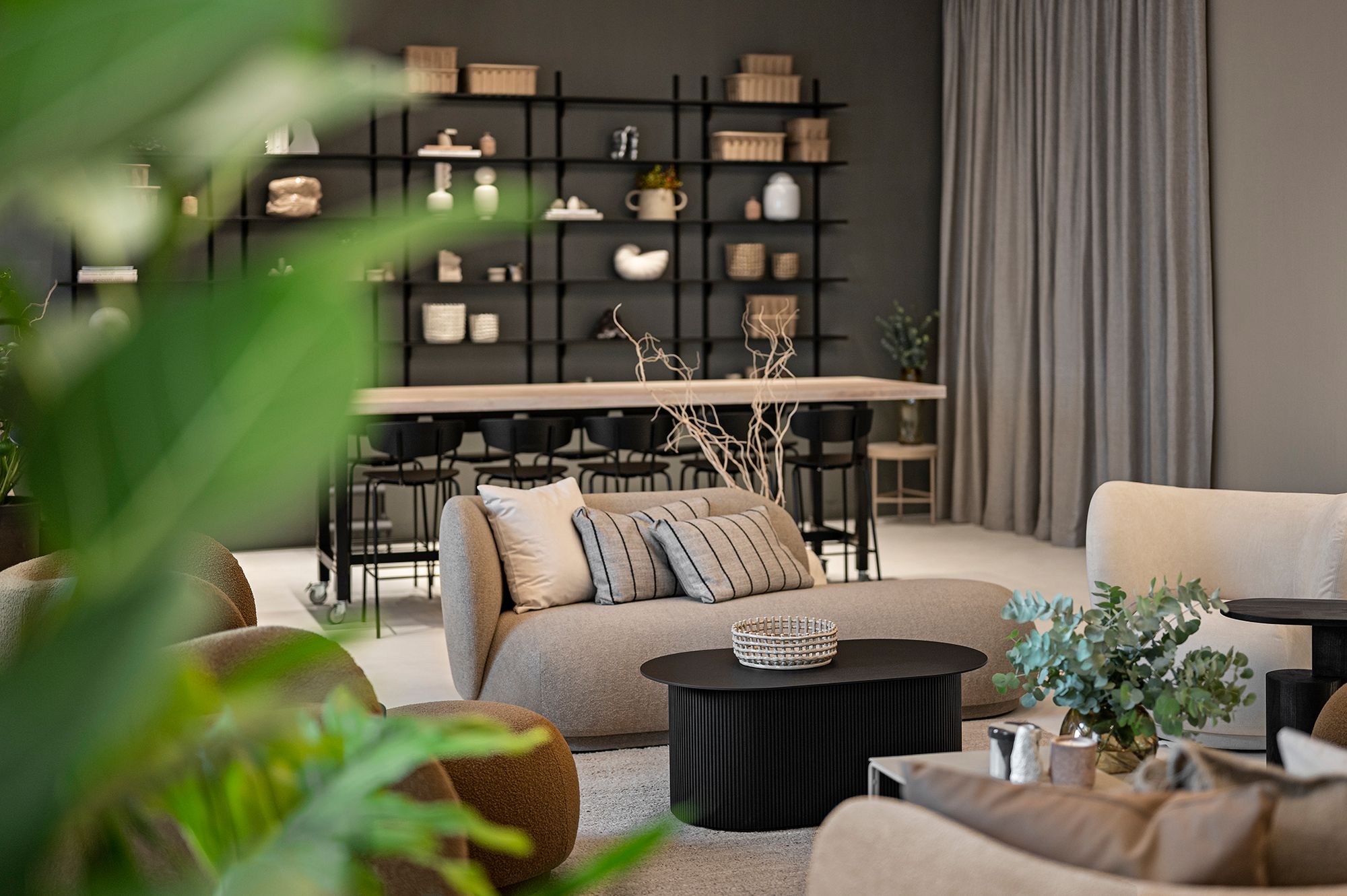
With almost all areas covered, where is there room for improvement?
We already have an idea of what we want to achieve in the next five years. We also want to develop in terms of services and brands, for example, in a few months we are opening our latest showroom, where we are bringing one of the biggest kitchen brands in the world, the Italian Veneta Cucine. We also plan to redesign Solinfo Café a bit, to shake up the design, as in the four years since we opened, it has become almost a brand in its own right, it has grown bigger than we first thought, into a regular place for people who didn’t even know Solinfo itself. We’re also considering products of our own development, ideas keep coming, so sometimes it doesn’t hurt to be reminded to stop for a minute.
Solinfo | Web | Instagram | Facebook
Photos: Gergő Gosztom

Head bonnet, tichel, chador—a pop-up exhibition on headscarves
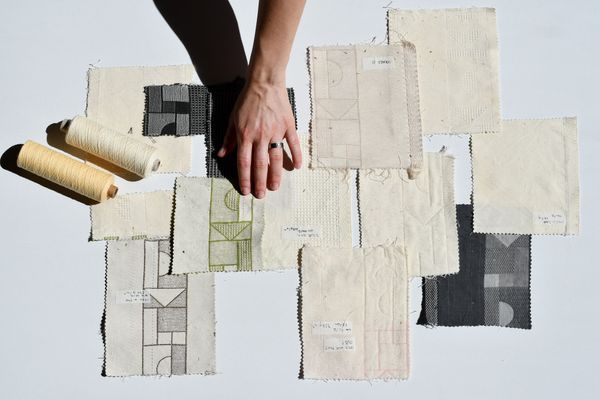
The homeliness of touch | Textile designer Berta Ujváry
